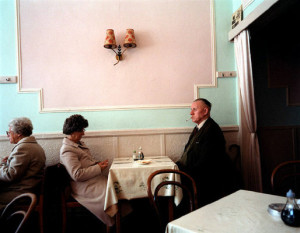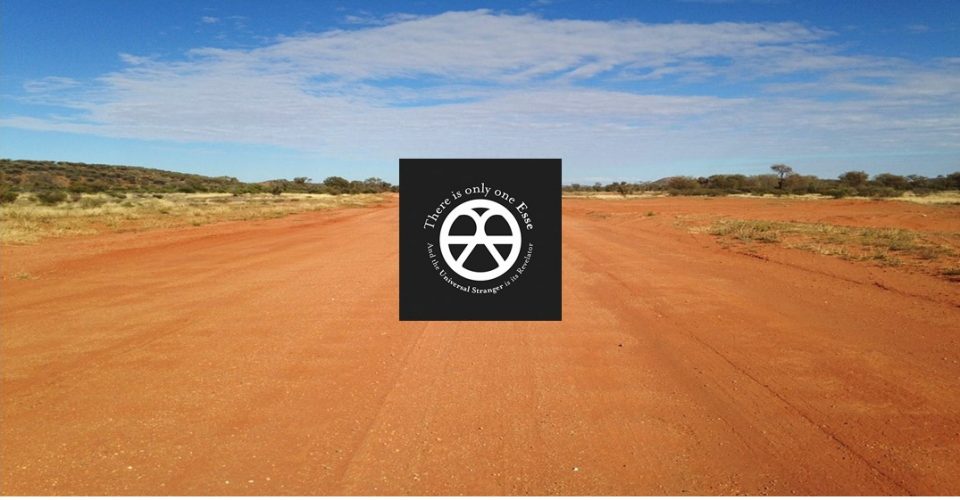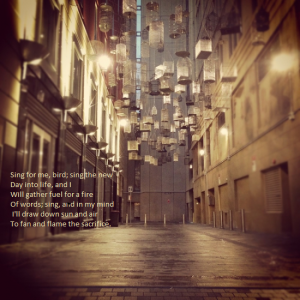Photographer Michele Mossop recently made her first appearance on these pages with a beautifully nuanced portrait of singer Matthew Henrick. Michele is widely known in Australia as a news photographer whose images are distinguished not just by a clear factuality that captures the essence of the story but also a sense of light, shade and composition that vividly evokes its human aspects.
That duality was to the fore in her picture of Matt – a publicity shot for his recording of Shakespeare’s Sonnet 18 – which combines a studio portrait of the singer and a photoshopped image of Dreshout’s famous engraving of the poet.
It turns out that Michele’s work, and portraiture especially, is heavily influenced by Renaissance art. To learn more about what shapes her craft, we asked her about her influences, career and creative process.
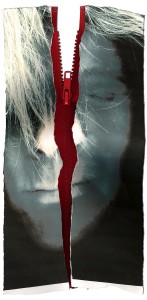
Self Portrait (Memory), by Michele Mossop, 2003
I always loved faces, portraits of any kind, and dancers especially. I also loved the old family photos. I thought about doing a course in photography, but photography was looked on as a trade. All the courses looked far too technical – they didn’t even mention subject matter. So I forgot about it and studied Fine Art at Sydney University; back then, the subject consisted only of art history. I loved the Renaissance and Baroque. I loved Italy. In January 1979 I moved to Florence.
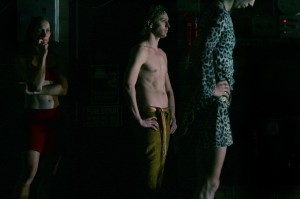
Dancers in the Wings, by Michele Mossop, 2008
It was a very interesting time. The Red Brigades, the Historic Compromise, the P2 masonic lodge – they were all interconnected (see References below – Rody). The newspapers were many and varied and the news magazines ran great photographs – all news, unposed, spontaneous.
When I arrived in Italy I skirted around the idea of photography but thought I wouldn’t be any good because of the technical demands, so I thought about doing paper conservation.
On my second day I photographed a maxi terrorist trial where the leader had just been captured. There were about 96 defendants in 12 cages….
My interest in paper conservation was less than lacklustre. It was just a way to have something to do with photography. But everyone in Italy seemed to have a darkroom in a cupboard or bathroom and everyone wanted to be a fotogiornalista. There were no schools or courses of photography. A boyfriend taught me how to develop black and white film and printing. i discovered it wasn’t that difficult. I became obsessed and spent most of my spare time and the little money I had processing film and printing in the bathroom/darkroom.
I started to check out the newspapers everyday to see what was happening and would go out and photograph demonstrations and other political events. I then fronted up to the small local daily paper, la Citta’, Quotidiano di Firenze, and asked for work – I started the next day. I think the editor thought I must have been crazy as a foreigner and a woman but he had a lot of faith in me and I just loved it. I had a front row seat to all that happened in the city, and that made me feel very much part of the place. On my second day at the paper I photographed a maxi terrorist trial where the leader of the group had just been captured. There were about 96 defendants in 12 cages in the courtroom.
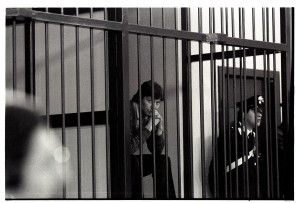
Terrorist Trial, Italy, by Michele Mossop, 1983
I prefer to use available light and to observe and wait for the image to happen. Sometimes this happens in professional life – when photographing the arts, for instance. Over the years on newspapers I have seen style move towards more controlled images, especially portraits, with the use of studio lights, art direction; the looser more spontaneous images aren’t appreciated as much. This of course is often mediated by the fact that you usually have limited time to shoot in a place that gives little or no context, so you just try to make a nice looking picture which is well lit and looks polished. More and more in newspapers there is a trend to using a photograph as little more than identification. This is a big worry….
The old masters didn’t have electric light. We still refer to Rembrandt light. Some of those I particularly like are Bronzino: highly stylised but exquisite; a couple of props to reveal something about the subject – for example, a chubby little boy squeezing a goldfinch. There’s Carravaggio – very dramatic, minimalist for his day, risky; he would have been a big butch war photographer today, or – as a friend suggested – Oliver Stone, just full of it. Apart from the old masters, other artistic inspirations and influences are Mark Rothko and cinema, especially the 1970s.
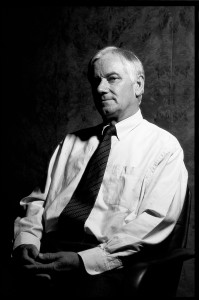
Dieter Adamsas, by Michele Mossop, 2000
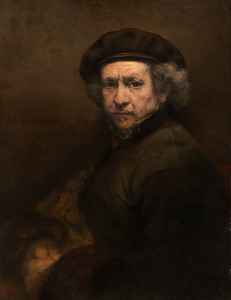
Self Portrait, by Rembrandt, 1659
Among photographers, iconic American fashion and portrait photographer Richard Avedon, whose classic portraits reveal much about their subject; the delightful, wry Martin Parr who captures the ordinariness of suburban Britain (or anywhere) – the Philip Larkin of British photography, but with humour and a much warmer heart.
One of the reasons I left Australia was a fear of the silent still suburbia where I grew up. I try to capture it but it always evades.
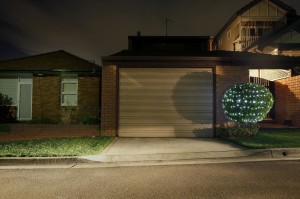
Suburban Nightview, by Michele Mossop, 2009
I have became more interested in landscapes – especially urban, suburban landscapes. One of the reasons I left Australia was a fear of the silent still suburbia where I grew up. I try to capture it but it always evades.
People ask how I would describe my style: I just look.
A lot’s changed since I became a photographer – technology, media. I miss the darkroom and the quietness of working there but I would never go back to it: digital photography is so much easier and it makes a huge difference for a freelancer – just a laptop, no rolls of film, no prints, turnaround is more immediate.
What I do miss about film is that you worked more intuitively: there was no screen at the back of the camera to check the exposure. You really had to think about what you were doing and know your camera, like playing a musical instrument. No photoshop. I feel as though I have lost something.
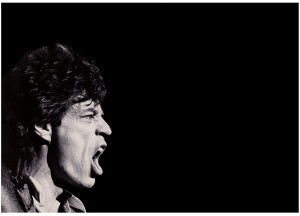
Mick, by Michele Mossop, 1989
Also with digital we shoot far too many frames and very indiscriminately. i looked at some negs I took at a Rolling Stones concert years ago: I shot only two rolls. Back then, you had limited time and only 36 frames per roll and manual focusing. You never wanted to run out of film in the middle of something so you shot with a lot more patience and thought. Today I would have shot the equivalent of about 10 rolls for the same result.
I love my iPhone camera – it’s portable and easy to use, but you still have to think about what you are photographing.
References:
Red Brigades, the Historic Compromise, the P2 masonic lodge
la Citta’, Quotidiano di Firenze (shots of Michele at 1.22, 1.23, 1.24 and 1.26)
Rembrandt light
Below: Portrait of Giovanni de’ Medici as a Child, by Agnolo Bronzino, c. 1545
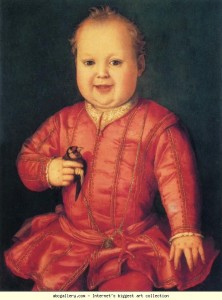
Below: Judith Beheading Holofernes, by Caravaggio, 1598-99
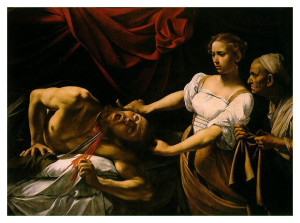
Below: Truman Capote, by Richard Avedon, 1974
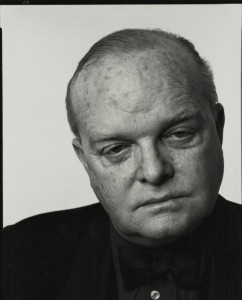
Below: Bored Couples, Brighton, UK, by Martin Parr, 1985
